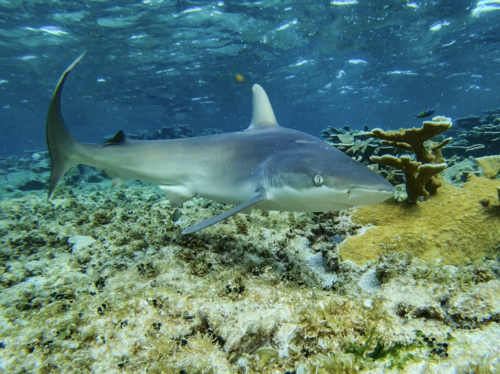
Blacknose shark
The Atlantic bluefin tuna (Thunnus thynnus) is a highly migratory, large pelagic fish known for its incredible speed, size, and commercial value. As one of the top predators in the marine ecosystem, it plays a crucial role in maintaining the balance of ocean life. Its unique physiology, including a warm-blooded circulatory system, makes it a fascinating species to study.
10 19 years
Lifespan
120 - 140 cm
Length
Vulnerable
Conservation Status
19 km/h
Swimming speed
Carnivorous, Insectivorous
Diet
Seasonal Migration
Migration
Appearance Overview
The Atlantic bluefin tuna is renowned for its large, streamlined body, built for speed and endurance.
Color
Dark metallic blue above and silvery white below
Body shape
Torpedo-shaped
Fins
Two dorsal fins, the first depressible into a groove
Length
Up to 13 feet (4 meters)
Weight
Up to 2,000 lbs (907 kg)
Diet
Carnivorous, feeding on fish, squid, crustaceans, and eels
Feeding Behavior
Hunts by sight and is a highly active predator, often hunting in coordinated schools
Social Behavior
Forms schools, sometimes segregated by size; highly migratory
Commercial Relevance
Extremely high value, especially in sushi and sashimi markets
Conservation measures
Subject to international fishing quotas and management plans, marine protected areas
Status
Endangered (varies by stock)
Threats
Overfishing, illegal fishing, bycatch
Habitat Distribution
Depth Range
0-1,000 meters (0-3,280 feet)
Geographic Range
North Atlantic Ocean, Mediterranean Sea, Gulf of Mexico
Preferred Environment
Temperate and subtropical waters, open ocean, and coastal areas
Reproduction and Life Cycle
Breeding Habits
Spawns in warm waters, primarily in the Mediterranean Sea and the Gulf of Mexico
Development Stages
Eggs hatch into larvae, develop into juveniles, and then mature into adults, with rapid growth in their early years
Fecundity
Females can produce up to 30 million eggs per spawning season
Maturity Age
Matures at around 4-8 years
Faqs about Blacknose shark
How long do Atlantic bluefin tuna live?
Atlantic bluefin tuna can live up to 40 years.
Where are Atlantic bluefin tuna found?
They are found in the Atlantic Ocean, from the Mediterranean Sea to the Gulf of Mexico.
Can you eat Atlantic bluefin tuna?
Yes, but their consumption is controversial due to overfishing and conservation concerns.
How fast can Atlantic bluefin tuna swim?
They can swim at speeds up to 43 mph (70 km/h).
Why are Atlantic bluefin tuna warm-blooded?
Their warm-blooded nature allows them to maintain a higher body temperature than the surrounding water, enhancing muscle efficiency.
What makes Atlantic bluefin tuna such fast swimmers?
They have a streamlined body, powerful muscles, and specialized fins.
What is the main threat to Atlantic bluefin tuna?
The main threat is overfishing, which has severely depleted their populations.
What conservation efforts are in place for Atlantic bluefin tuna?
International agreements and fishing quotas aim to regulate catches and protect the species.
How many eggs can an Atlantic bluefin tuna lay?
Females can release millions of eggs during spawning.
How far do Atlantic bluefin tuna migrate?
They migrate across the Atlantic Ocean for feeding and spawning.
Copyright @ Nature Style Limited. All Rights Reserved.
 English
English